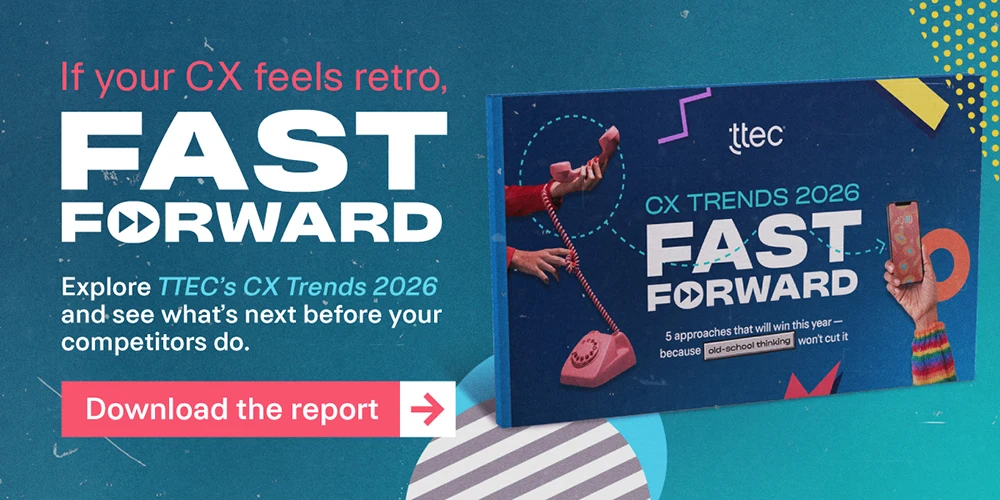
Reengineering EV returns unlocks 50-point NPS gain and major cost reductions
Integrated, in-house model built for scale delivers 88% cost savings, smarter path to resolution
Reengineering EV returns unlocks 50-point NPS gain and major cost reductions
Integrated, in-house model built for scale delivers 88% cost savings, smarter path to resolution
Proof, not promises:
When consumers encounter problems charging their electric vehicles, fast and accurate resolution is critical. But for one global automotive brand, returns-related service cases got lost in outsourced loops — leading to long delays, limited visibility, and rising costs.
The manufacturer turned to Percepta by TTEC to bring product returns operations in-house. The result was a faster, smarter model that connected diagnostics, engineering, and case resolution to meet the real-time demands of EV ownership.
Challenge
The brand’s support model for charger-related returns issues relied on third-party vendors. Frontline associates escalated cases manually, often through disconnected tools like email or cloud-based collaboration platforms such as Slack. With long vendor hold times and inconsistent responsiveness, associates couldn’t access real-time updates — and customers were left in the dark.
For EV drivers, that meant more than inconvenience. When a vehicle can’t charge, it can’t go. Every day spent waiting for a resolution is a day the customer may miss work, skip errands, or be left without mobility. These delays quickly translated into frustration, dissatisfaction, and brand erosion.
As the EV program expanded, the impact only intensified. Average handle times rose and rework was frequently needed. Duplicate and inaccurate returns submissions had to be reconciled. Lack of a centralized view into case status led to delays that disrupted service, strained loyalty, and stalled resolution.
The challenge was clear: Eliminate the bottlenecks, improve case visibility, and build a faster, smarter path to resolution.
Our solution
After years of supporting the brand’s EV customer care operations, Percepta by TTEC was engaged to take over the return merchandise authorization (RMA) process for home charging units. This decision followed consistent service performance and was driven by the need to eliminate third-party delays, improve diagnostics, and streamline warranty processing.
Although new to this EV program, the RMA process was well within the core capabilities of Percepta by TTEC. The team leveraged prior experience from fuel-powered vehicle warranty adjudication to build a solution tailored to the unique technical and logistical challenges of EV chargers.
In 2023, Percepta by TTEC transitioned RMA operations in-house and deployed a fully integrated model focused on diagnostic accuracy, engineering collaboration, and long-term scalability.
The insourced solution included:
- Frontline triage powered by embedded workflows to guide real-time troubleshooting
- Tiered diagnostics, with Level 2 escalations handled by trained EV subject matter experts
- Warranty claim evaluation, enabling associates to approve or deny claims and route defective units for failure mode and effects analysis (FMEA)
- Vendor accountability processes, including chargeback mechanisms for confirmed defects
- Engineering integration that enabled product updates, over-the-air (OTA) revisions, and real-time feedback to manufacturing teams
To support these changes, Percepta by TTEC introduced several process improvements including a customer relationship management (CRM)-based case tracking to replace manual escalations. We simplified the classification model, reducing more than 300 categories to 164, improving diagnostic precision. Automated case generation reduced manual input and improved processing speed. Our data dashboards and customer data integration identified trends, validated claims, and informed product improvements
Together, these capabilities created a connected, scalable RMA model that replaced reactive workflows with intelligent, proactive support — while driving accountability, efficiency, and continuous product improvement.
Results
The redesigned RMA model delivered measurable impact across operations, customer experience, and expenses. Costs were reduced 88% thanks to the insourcing support.
Net Promoter Score (NPS) rose by 50 points, transforming how customers viewed support.
Process delays were slashed 40% and average handle time (AHT) reduced by three to five minutes through automation.
With less friction and more insight, the RMA process now worked like EV ownership should: Smooth, connected, and confidence-building.
Why it worked
This wasn’t just a cost-saving initiative. It was a ground-up redesign of how RMA issues are diagnosed, routed, and resolved within a modern EV ecosystem.
Because Percepta by TTEC had supported the EV customer care program from inception, the team understood the operational landscape, escalation challenges, and integration points across systems. That foundation — combined with deep experience in warranty adjudication and back-office optimization — allowed the client to move quickly and confidently.
Key enablers of success included:
- Phased, disciplined transition from vendor dependency to full in-house support
- Purpose-built workflows and tools to support both customer care and engineering feedback loops
- Enhanced data capture that powered OTA updates and next-gen product improvements
- Real-time case visibility and reporting that improved service levels and stakeholder trust
- Shorter resolution cycles that signaled competence, reduced repeat claims, and boosted customer confidence
The redesigned model also enabled smarter data use, fueling faster issue resolution today and informing better product design tomorrow. By connecting diagnostic intelligence, operational rigor, and continuous improvement, Percepta by TTEC helped transform a reactive RMA process into a proactive, scalable solution — one designed for the speed, complexity, and expectations of today’s EV customer.
